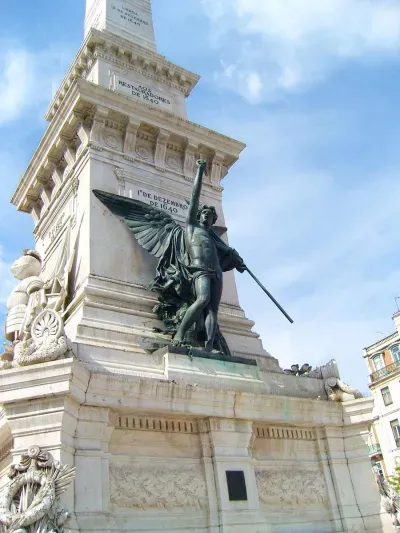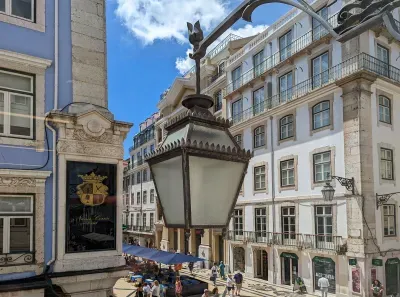
Most tours of Lisbon will pass through the Praca dos Restauradores in the Baixa district. Here, towering over the centre of the plaza is a 30-metre high, white obelisk, built to commemorate those who fought in the 17th century War of Restoration, helping to free the country from six decades of Spanish rule under the Habsburg dynasty and facilitating the transition of power to the House of Braganza which held power in Portugal until the 20th century.
It looks like the kind of obelisk that might have been taken from Egypt, but in fact it was only built in the 19th century. Unlike most public monuments, this one was paid for by public subscription from some of Lisbon’s more wealthy families.
It’s worth taking a closer look at if you get the opportunity. This is an iconic Lisbon structure, deep in symbolism, standing in a square at the bottom of the majestic Avenida da Liberdade. The mosaic pavement and majestic obelisk provide a good photo opportunity for those passing through the plaza.
The monument - which translates literally as the Monument of the Restorers, was built in 1886 under the direction of Antonio Tomas Fonseca and is said to be a monolith-carved out of a single piece of stone. It sits on a large traffic island which is decorated with distinctive mosaic tiles in a geometric pattern. At the base of the obelisk are two weathered bronze statues. One, a male figure, facing south, holding a flag, symbolizes Independence. The other, a female, facing north, holding a laurel wreath, symbolizes Victory. Inscriptions on the monument commemorate the dates of key battles and events in the War of Restoration.
Attraction type
